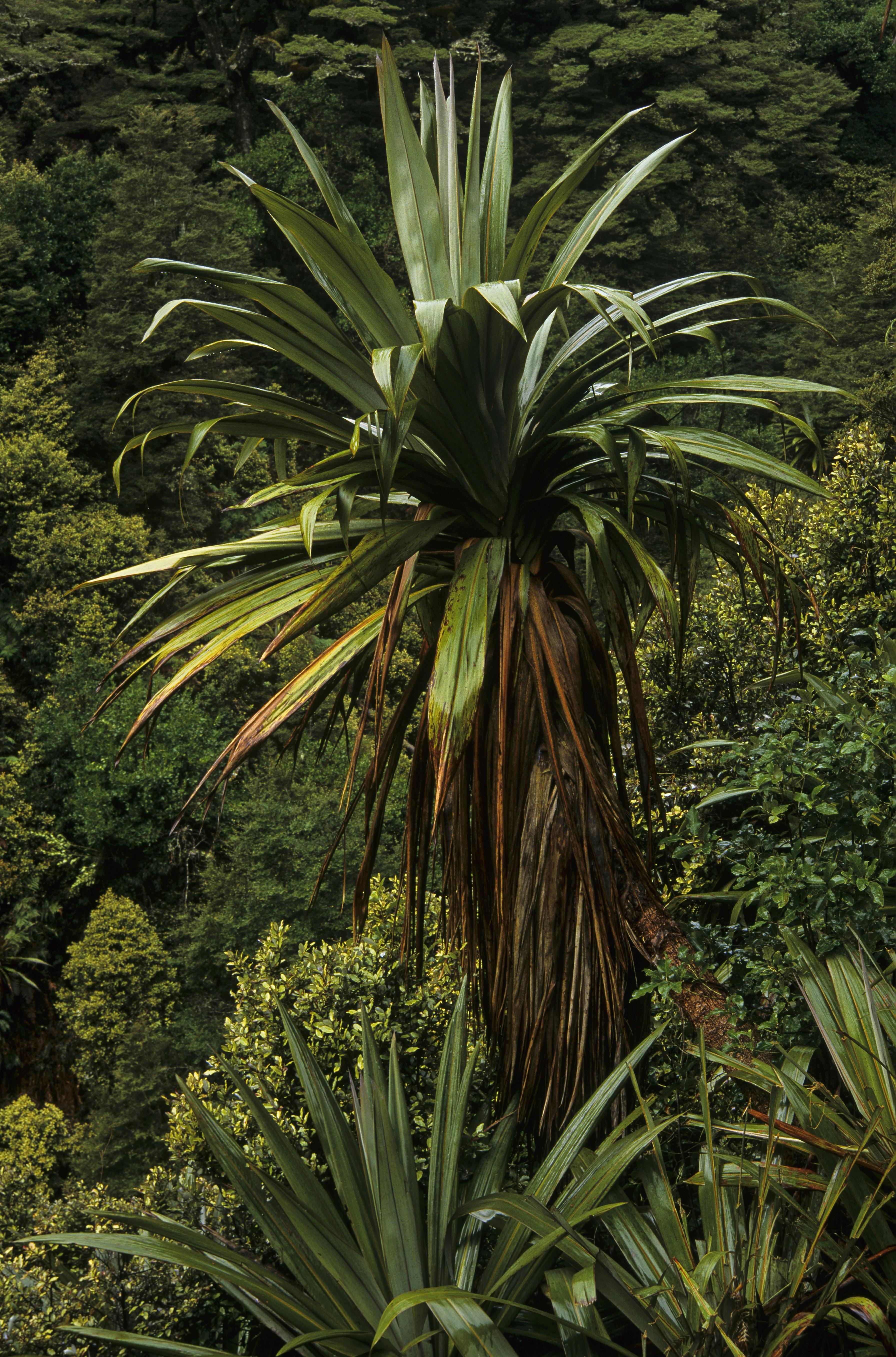A tropical species that has made its home in the mountains
The track to Rangiwahia Hut in the Ruahine Range has always been one of my favourites. The benched and graded trail provides a pleasantly easy passage into the Ruahine mountains and tops, en route passing through attractive forest, with some notable stands of mountain cabbage trees.
During winter, snowfalls occur well down into the forest and it is then that the mountain cabbage trees look most incongruous. Partly because their large-leaves lend them a sub-tropical look, when snow covered these plants seem entirely – and delightfully – out of place.
Indeed, the cabbage tree genus, Cordyline, is a tropical one, with most species occurring in places such as Queensland, New Guinea and New Caledonia. Scientist Philip Simpson, author of a superb book on cabbage trees, Dancing Leaves, wrote of them: ‘Cabbage trees look like something that Dr Seuss might have dreamt up: fundamentally simple and eminently identifiable with people.’ They belong to the monocotyledon branch of flowering plants, in a family of tree lilies.
New Zealand has six species, the most ubiquitous being the cabbage tree (Cordyline australis) so widespread in many parts of the country. Mountain cabbage trees (Cordyline indivisa) – known to Maori as ti toi or ti kapu – are a closely related species that grows in the mountains, mainly above 1000m. They grow up to five metres high. Its distribution spans the axial ranges between East Cape to Fiordland, but trees also occur in the mountains of Coromandel, Taranaki, the Waikato and King Country. Ti toi is often, but not exclusively, associated with mountain beech forest where it grows in small groves – usually where streams, slips, windfall, past fires or tracks have broken the beech canopy sufficiently to allow through the necessary light ti toi needs to thrive.
The sole species of New Zealand Cordyline to exist in mountain habitats, ti toi has adapted to the rigours posed by its higher-altitude environment partially through gigantism. Some of its leaves span the width of a human hand, and were used as thatch by Maori when making temporary shelter in the mountains, or as capes to ward off rain. Dead leaves line the trunk like a Victorian skirt, and provide frost protection for the tree.
- Rangiwahia Track, Ruahine Forest Park, Rangitikei
The Rangiwahia Track begins from Renfrew Road, east of the township of Mangaweka. This track provides good access onto the tops of the Whanahuia Range, where the comfortable Rangiwahia Hut is situated. In recent years, a large slip has unfortunately gouged out part of the track, necessitating a steep detour around it. However, DOC has plans to upgrade the track. Regardless, trampers wanting to observe mountain cabbage trees can easily do so without going beyond the detour.
- Te Iringa Track, Kaimanawa Forest Park, Taupo
This is another underrated track that leads into the mountains on a pleasant gradient, passing some exquisite stands of ti toi. The track begins from Clements Mill Road, and climbs gradually up to the forest-clad peak Te Iringa. Although Te Iringa Hut was burnt down many years ago, there are beautiful campsites beside Tiki Tiki Stream in the Kaipo Valley.
- Whirinaki Forest Park, Bay of Plenty
Dense podocarp forests are what draw most trampers to Whirinaki Forest Park, but the park also contains large areas of very fine beech forest and among these stands of mountain cabbage trees. The tracks leading to Upper Te Hoe, Upper Whirinaki and Whangatawhia huts are all worthy destinations where ti toi abounds.








